Transcription
"Supermax"
The Adjustment Center (A/C), is but one of the two Supermax facilities here at San Quentin State Prison --- California Code of Regulations Title 15 has designated the Security Housing Unity (SHU), classification as Privilege Group D (providing for 3/4 of the privileges offered to general population). This set Privilege Group has equipped all prisons with the means to simply sprout their very own Supermax Unit --- usually referred to as Ad-Seg, otherwise known as (Administrative Segregation).
Carson Section or "C-Section" is the Ad-Seg unit for the non-condemned population, while the A/C houses condemned prisoners. C-Section officials often send their most unruly inmates to the A/C --- those that kick prison staff, gas people (mixing feces, urine, and infected blood e.g. AID's or Hepatitis C and/or sometimes both; into milk cartons to throw onto inmates or guards at will), and spear others (spears are usually made by melting plastic to coneect a 5 1/2" sharpened paperclip to ten pieced of rolled up magazine paper. The spear then gets projected by a makeshift crossbow --- two foot-long rolled up papers as thick as your wrist that's then fastened together with ripped-up pieces of sheet into a cross. The spear cylinder is then tied atop the cross --- the cylinder being small enough to fit between the tiny holes on the screens of the cell door. The crossbar beneath the bar with the cylinder, has elastic from boxer shorts tied onto each end. The inamte then selects his/her intended target and marks the "kill shot" --- the neck --- on the hole of the screen. I must say, it's pretty effective. I've witnessed a spear go straight through a man's neck.)
Although C-Section is San Quentin's "instant" Ad-Seg, the A/C was specially designed to be a Spermax. Within the latter, not only does the physical make up make it impossible to spear or gas anyone --- steel wall and door, filled with concrete for cell fronts; as opposed to bars with a screen --- but the guards follow set precautions which allow them to best handle any type of potential situation that might occur.
For example: To stop inmates from carrying weapons, we're only permitted to exit our cells wearing socks, underwear, t-shirt, and shower shoes (sandals). Before we exit our respective cells, the aforementioned items are handed to one of the guards through a tray slot for inspection, while another officer conducts a "strip search" --- mainly looking inside our mouths and rectums. The "roll" consisting of prison blues, beanie, towel, sweats, and shoes --- also goes through the tray slot for "physical" inspection as well as scanned in a metal detector situated on the first floor nect to the bottom of the staircase. Prior to going out to the yard, another staff member armed with a wand (handheld metal detector), again checks our mouths, groin, butt and the bottom of our feet. Just in case you happened to sneak a weapon and/or contraband out through all of this --- we have our ways --- we go through this entire routine once again while out on the yard, in front of everyone, before going back to our assigned cells.
To halt prisoners from attacking staff (and it does happen), after we're strip-searched, we turn around, clapping our hands together behind our backs and sticking them outside the tray slot to be cuffed or uncuffed. This procedure was implemented after an earlier incident whereby an inmate spun around, grabbed the officer's arm --- at the time it was customary for guards to stick their hands through the tray slot (food port) into our cells to lcok and unlock the cuffs --- with one hand while using the other to slice open the staff's arm with a "tomahawk" (an inmate manufactured weapon made from a razor blade, paper, and elastic from the socks). After we're cuffed, we step forward, kneel down to our knees on the concrete or asphalt surface so that a guard can apply the leg irons when the door opens --- if we stand up as soon as the door opens, one of the other two staff members armed with CO2 Pepper Spray canister & the other with a baton, rush in to spray and beat us; which leads to their best line of defence --- the thre--on-one escort.
Three guards to one inmate whenever you step out of the cell. One officer holds your arm while the other two remain situated on either side, both armed and anticipating a conflict --- one guard positions their baton to strike you, while the other points the CO2 can at you --- all staff wear a riot helmet with a clear plastic shield to cover their face. Moreover, the three-on-one rule applies until the inmate being escorted is secure into his assigend cell and only then, do they move onto the next inmate --- thus allowing them to deliberately absorb some three hours of our yard time; although, somehow in inclement weather, it only takes them an hour? Hmm...
In order to prevent inmates from fighting and killing one-another on the prison yard, the Control Compatible yards were created for all Supermax and Ad-Seg units in the State of California --- The Northern Mexican and Black yard along with their couterpart, The Southern Mexican and White yard. If you were to put these rival group segments on the same yard, it would lead to a massacre. Case in point, The Corcoran State Prison SHU's staged "galdiator" fights that ensued on nearly every yardcall from 1980 until 1995, where officers would lay bets on their favorite inmates and then subsequently shoot them down at the conclusion of the altercation.
To avert inmates on these Control Compatible yeards from fighting one-another several large and unmistakable signs (both in English & Spanish) are posted which read, "No Warning Shots"; while officers are armed with a .38 caliber handgun; 7mm Block Gun, 7.62 Mini - 14 assault rifle, and power-generates CO2 srapy cannon (although staff have since stopped using this line of offense due to an incident where an inmate attacked another with a "shank" (finely rolled-up magazine, the sharpened --- this kind of shank goes right through the metal detectors), and fired CO2 Pepper Spray cannon in their direction, which ricocheted off of the backboard of the basketball hoop, spraying the gunman), in the guard tower overlooking the yard.
Each gunman is different. I once saw a gunman panic during an altercation, repeatedly dropping the 7mm Block Gun until finally, the officers on the ground, ran up to the yard in question with a CO2 fire extinguisher-like canister, spraying the inmates at will. There are those who "itch" for something to "pop off", so that they can shoot at us. On one such occasion, the gunman didn't even blow the whistle (the whistle alerts all prisoners on the yard to get down, leaving only the combatants standing and giving the gunman a clear shot), before unloading the clip in the Mini-14 assault rifle and killing an innocent inmate standing twenty or more feet away with a ricochet.
Collective reasoning by prison adminitrators have deduced that the best method to prevent prisoners from assaulting and killing inmates and staff alike is by denying convicts the means to manufacture weapons --- though having nothing but time on our hands, serves to fuel our creativity.
Hence all metal objects are denied in this unit and staff's metal items are strategically placed where inmates cannot get to them. However (perhaps accidentally on purpose) whenever guards misplace or lose said -- (it is common for officers to absentmindedly pocket cuffs, keys, etc and take them home), they immediately blame and search us (though they know we have no way of retrieving the aforementioned, staff uses this as an excuse to "search" our houses; usually just trashing our cells, ripping up photos, letters, legal work, or anything that they know we value. Therefore, prisoners refer to a search of this nature as a "Hurricane"). When magazines and legal mail come in, the staples and paperclips are removed before said items are given to us --- if the guards miss one and search our house, we are written up for having "dangerous contraband". Razors and nail clippers are only dispensed during our shower time, and thoroughly inspected before the restraints are placed back on us for return to our cells --- if the razor or a peice of the metal from the clippers are missing upon our handing it over post-use, we're immediately pepper sprayed, beaten, cuffed, shackled, and searched (and not necessarily in that order).
To curtail plastic weapons from being made, all canteen items that come wrapped in some sort of plastic, are dumped into a paper bag e.g. soups, chips, and the likes --- causing food to go stale or rot as well as attracting bugs and, in some cases, rodents. All items with hard plastic coverings, such as toothpaste bottles, deodorant, shampoo, lotion etc are kept in a box with our cell number in a locker located next to the guard office and only given to you upon request when you go to the shower. No bowls or cups are allowed in this unit; though, if they were, they'd be like the ones sold at the canteen for the remainder of the prison population. The prison provides a 2" rubber toothbrush and if you need another one, you must turn in the one you're using --- the same applies for the spoons and forks given to us. No pens are permitted; only the pen filler.
As previously mentioned, paper shanks are a product of things like magazines and newspapers. To prevent the deliberate manufacturing of said, only 2 magazines are permitted in our cell at any given time --- when more magazines come in, an inmate must provide a one-for-one exchange with the mail cop. No more that 3 books are sanctioned --- bible and dictionary included. We're permitted no more than fifteen letters from family and friends --- anything beyond that is subject to disposition as "contraband" (the round file) -- two tablets of paper not to exceed 100 sheets; forty envelopes; and twenty-five photos. Besides the three cardboard boxes given to us --- everything in our cell must fit into these three boxes and anything more can be disposed of --- no additional cardboard is permitted as they can be broken down and used as "candles" to burn down plastic --- officers regularly conduct searches whenever we step out of our cells, taking any and all extras, no if's, and's or but's.
Further, all of the underwear in this unit comes with a drawstring waistband rather than elastic; even though the steel and concrete fronts prevent spearing.
At first glance, any law-abiding rational citizen that reads these claims of preordained precautions enacted in a Supermax unit to suppress violent inmates might safely assume that it's the right thing to do and therefore logical. Especially with articles out there like, "A Ticking Time Bomb" by Noel Brinkeroff, in The California Journal, dated March 2001; stating, "California is living on borrowed time, thanks to the potentially dangerous combination of an antiquated prison holding convicted murderers who lately, are showing signs of violent unrest. In recent months, attacks on San Quentin staff by condemned prisoners have escalated dramatically, alarming officials and leaving some fearful that a riot or an escape may yet happen..." going on to say..."assaults on staff have risen astronomically", according to Noel, who receives copies of all incident reports filed with the state by rank-and-file guards. The San Quentin Spokesperson (Critendon), confirmed that assaults have indeed increased and that there have been some 15-20 attacks on guards by condemned prisoners just within the last eight month period.
Ironically, Supermax facilities were designed to control inmates within the prison --- often referred to as "prison within a prison" --- violence has steadily INCREASED in such units; where prison staff "must" follow the safety precuations outlined in this article for the "safety and security" of the whole institution. In the recent article, "Is It Time to Ban Solitary Confinement", by Julia Dahl, National Liberator, dated February 2011, states: "Jesenia Pizarro, an assistant professor of criminal justice at Michigan State University who has written about Supermax prisons, says that national data on who is segregated, for how long, and whether segregation works to decrease violence in prisons or tame unruly inmates is woefully inadequate." "We spend so much money on these prisons, but we don't know if they work", said Pizarro. "Wardens and most correctional officials swear by it, but no-one has actually done a comprehensive study."
In a no-so recent article from Time Magazine, dated February 5th 2007, Jeffrey Klugger, "The Paradox of Supermax" quotes Albert W. McCoy, a professor at the University of Wisconsin at Madison and the author of a book, "A Question of Torture", describes what isolation does to the human body and mind, "It sends prisoners in one of two directions, catatonia or rage"; furthermore, the article states that California and Texas share a daunting similarity --- suicide rates have increased among inmates in isolation. Also this form of treatment is often referred to as the "no-touch torture." Having been housed in the A/C for almost a decade, I agree with Albert McCoy, taking notice first hand of how inmates change from sane (well, somewhat), into rage to catatonia and back again. Heck, I've seen more damn suicides than executions, and we're on death row!
The question arises; how do these facilities cultivate these two responses? First, we must come to terms with the fact that prisons as well as Supermaxs' are in no way rehabilitative. Second, we can rely on the age-old maxim, "misery loves company" and finally, the law of association.
The role of prison is to sever one's attachments to the world, which causes extreme agony. We can safely assume that we all have suffered a loss to an attachment at one point or another. Just imagine the torment experienced whenn we get our hearts broken and then mulitply that times 100 --- since you not only lose a loved one, but everything --- home, family, possessions, sense-type gratifications, pets, rights and our freedom --- all in one shot. Now envision what would happen when you cram hundreds of people feeling this way into a single dwelling? It doesn't take a physicist to conclude that you've got a lot of highly-unstable, emotionally-toxic chemicals in close proximity which can and will eventually erupt in complete disaster.
Prison officials' response to the multiple explosions detonating in every prison across the nation is the Supermax; which in-turn eliminates the limited and overly-regulated contact to and with our attachments, otherwise offered in the general population --- phones, family visits, and correspondence.
However, the Supermax doesn't just stop there. In the A/C, you have no cellmates; all six tiers are cordoned off; the steel cell fronts filled with ice-cold concrete seals you in so tightly that a ventilation system is necessary to breathe and the only way you might speak to one of your sixteen other tier comrades, is to lay your head on the floor, put your lips to the very slim crack beneath the door and yell at the top of your lungs to be heard while at the same time, the party you're attempting to chat with, is doing the exact same thing. The flagrant disregard for our comfort, means that the heat will be turned up "full blast" in the cummer while the winter brings a fresh dose of freon to the facility air-conditioning and yes, I said that correctly. The inmate commissary provides for 1/4 of the maximum allowable purchase power out on the mainline as I mentioned earlier, a mere $55 vs the handsome $220 available to general population, not to mention, attending food drives once-a-month (San Quentin has a contract with outside vendors --- Costco, Domino's Pizza, Subway and various other restaurants), and you can place orders directly with the vendor; the Supermax privilege group entitles you to one (1) annual 30 pound vendor-approved food package while the remaining condemned population and mainline inmates may purchase four (one in each quarter) with a much-wider selection of goods and services; appliances are allowed in general population, not in Supermax; religious services are denied; yard comes three times per week for three hours; and you may only shower three times per week for seven minutes --- the shower has a timer and only staff cann operate the timer function --- the shower button to start the water is also near the guard office. One shot of water, that's it.
Life had just gone from bad to worse. In the article, "Is It Time to Ban Solitary Confinement", Julia Dahl writes: "You put mentally ill people in this environment and they literally go beserk". "They become much more ill and start to throw feces, cut themselves or attempt suicide --- which gets them more time on their sentence. It's insanity". Since the A/C knowingly causes severe deprivation, it became mandatory that a psych-tech and/or doctor check on all of the inmates everyday, to see if we are feeling miserable enough to hurt ourselves or other, they'll walk yet a second time if the officers find a prisoner dead.
Buildings filled with tortured souls ignite negatibe feelings within the staff working in these units --- especailly officers whom themselves suffer in their private lives. An "us" versus "them" mentality formulates in both inmates and guards alike --- and the war begins.
Unfortunately, this war is going on in every Supermax across the nation, with no resolution in sight. It was startling to see this fact reflected in a study conducted by Craig Haney, Curtis Banks and Phillip Zimbardo dubbed, "A Study of Prisoners and Guards in a Simulated Prison." Doctor Zimbado, a Stanford University professor calls it the "dispositional hypothesis", stating, "The Dispositional Hypothesis has been embraced by the proponents of the prison status quo (blaming conditions on the evil in the prisoners), as well as by its critics (attributing the evil to guards and staff motives and deficient personality structures). The appealing simplicity of this proposition localizes the source of the prison riots, recidivism, and corruption in these "bad seeds" and not in the conditions of the "prison soil". Such analysis directs attention away from the complex matrix of social, economic and political forces that combine to make prisons what they are --- and that would require complex, expensive, and revolutionary actions to bring about any meaningful change. Instead, rioting prisoners are identified, punished, transferred to maximum security institutions or simply shot dead on a prison yard like so many others, outside agitators sought, and corrupt officials suspended --- while the system itself goes on essentially unchanged, its basic structure unexamined and unchallenged."
Perhaps Julia Dahl has the right of it --- "It is time to ban solitary confinement as well as California's "instant" Supermax's and Ad Segs."
Footnotes (see 2)
[Bold]The Prison At A Glance[/bold] *Built on what was once Tulare Lake, home of the Tachi Indians, Corcoran is 170 miles Northwest of Los Angeles in the San Joaquin Valley. *First California prison with separate housing built exclusively for high-security inmates. *designed for 3,000 inmates, Corcoran is now home to 5,030 prisoners, including Charles Manson, Sirhan Sirhan, and Juan Corona. *Surrounded by cotton fields, it encompasses 942 acres and employs 1,534 people. *Inmate programs include farming, dry cleaning, computer-assisted education, and toy repair. *From 1989 to 1995, seven inmates were fatally shot by guards, more than any other prison in the United States.***
[Bold]Key Dates[/bold] *Nov 1988: Facility opens at a cost of $271.9million. *Sept 1989: Violence in the Security Housing Unit leads to state of emergency declaration. *April 4th 1989: Inmate William Randell Jr. shot to death by guard. *1989: Fights and shootings during prison's first full year are so rampant that it's characterized as the most violent in America. *Feb s, 1990: Inmate Andres Romero shot to death by guard. *April 8 1993: Inmate Michael Mullins shot to death by guard. *Sept 9 1993: inmate Henry Noriega shot to death by guard. *Apirl 2 1994: Inmate Preston Tate mistakenly shot to death by guard aiming at another prison. Death prompts whistle blowers to come forward; lawsuit by family of victim calls public attention to alleged abuses. *May 30 1994: Inmate Donald Creasy shot to death by guard. *June 1994: Some guards stop mixing rival gangs in the exercise yards; top corrections officials order them to resume integration. The violence spikes again. *Fall 1994 Corcoran guards upset by brutality, contact FBI, which launches civil rights probe. *June 1995: Busload of new inmates allegedly beaten in prison yard. Eight guards, including an associate warden are later disciplined. *Feb 26 1998: Federal Grand Jury indicts eight guards for Tate shooting and alleged abuses. *Summer 1998: Federal probe expands; two Grand Juries weigh more allegations of abuse and cover-up.
[Bold]Speaking In Truth[/bold]
Kekoa Manibusan
SQSP # T-06046
San Quentin, California
94964-0001 USA
*Please visit my pen pan classified
Other posts by this author
|
2021 mar 5

|
2014 jan 17
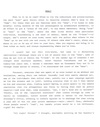
|
2013 mar 15
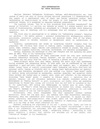
|
2013 mar 3
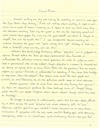
|
2013 jan 20
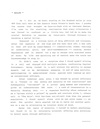
|
2012 nov 24
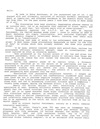
|
More... |




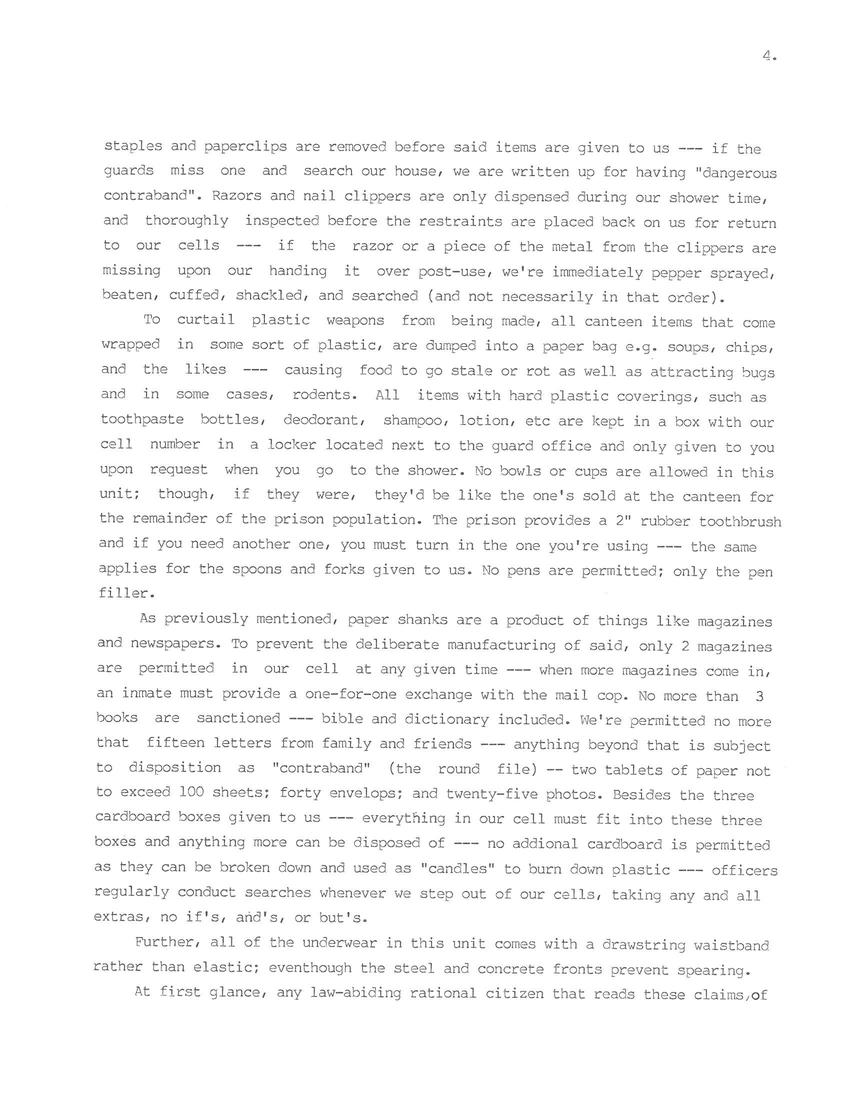
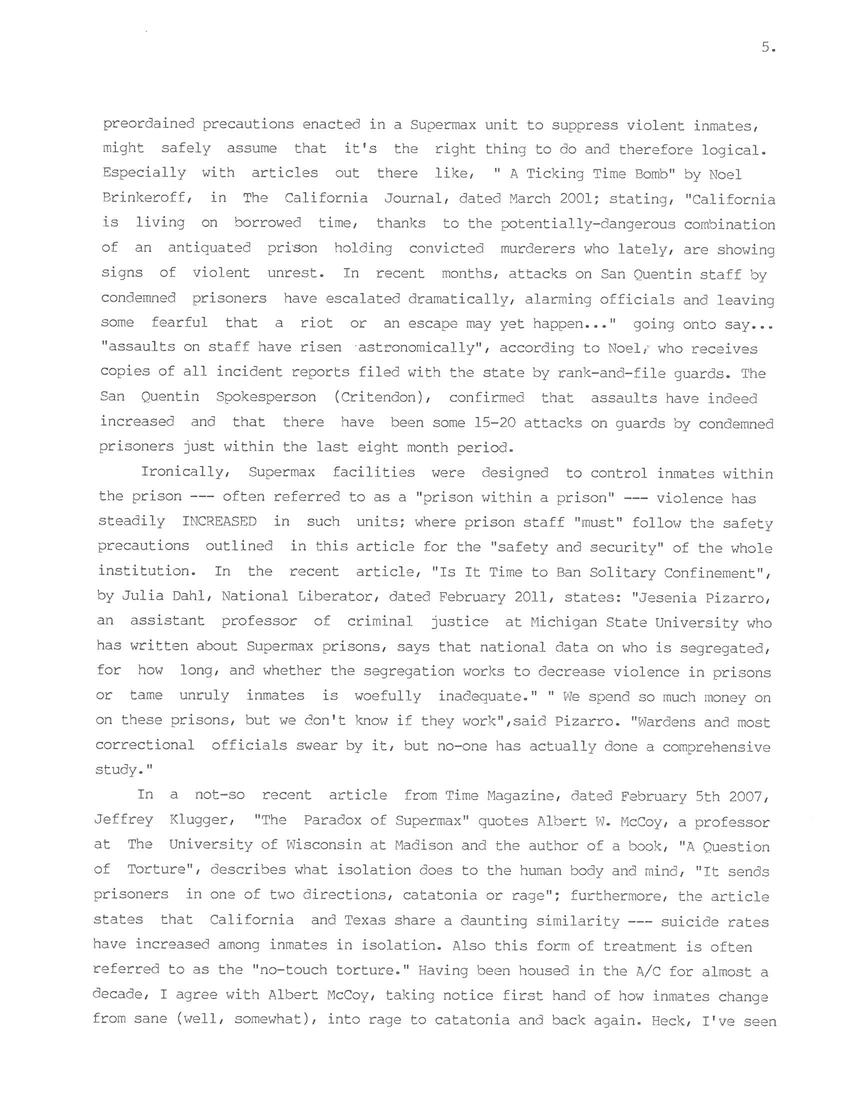
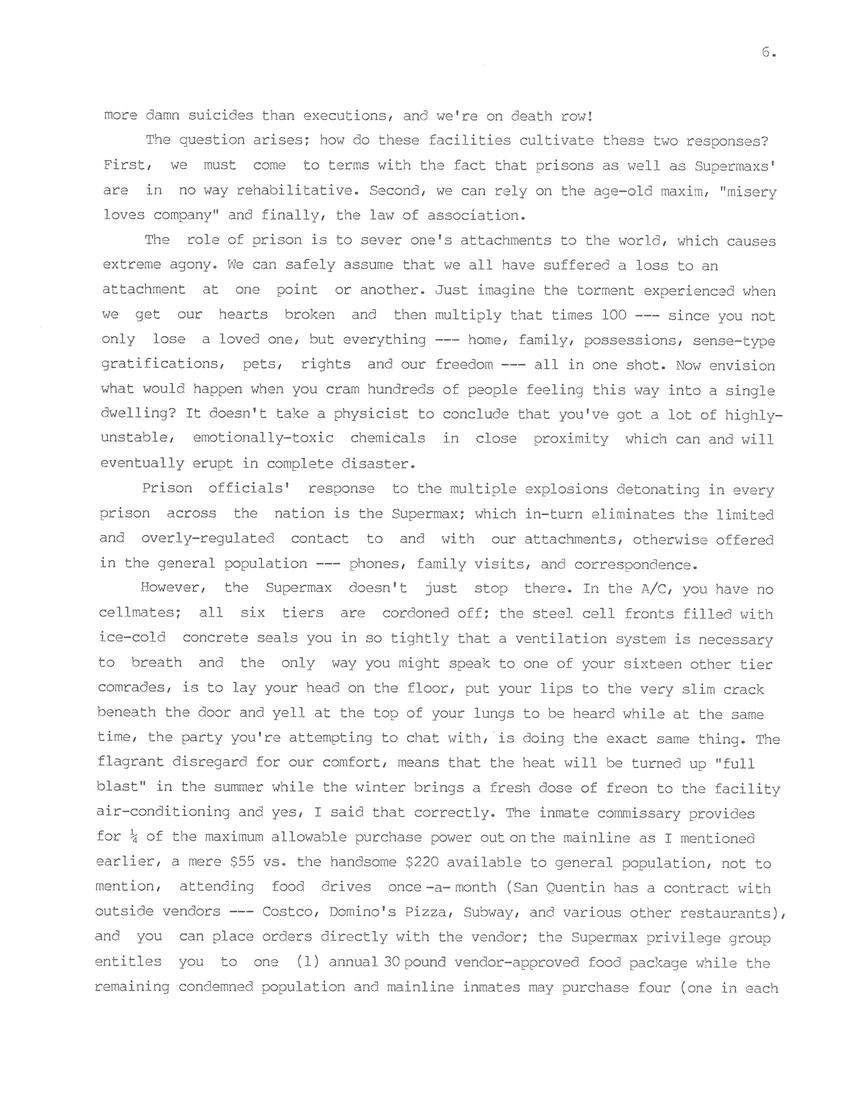
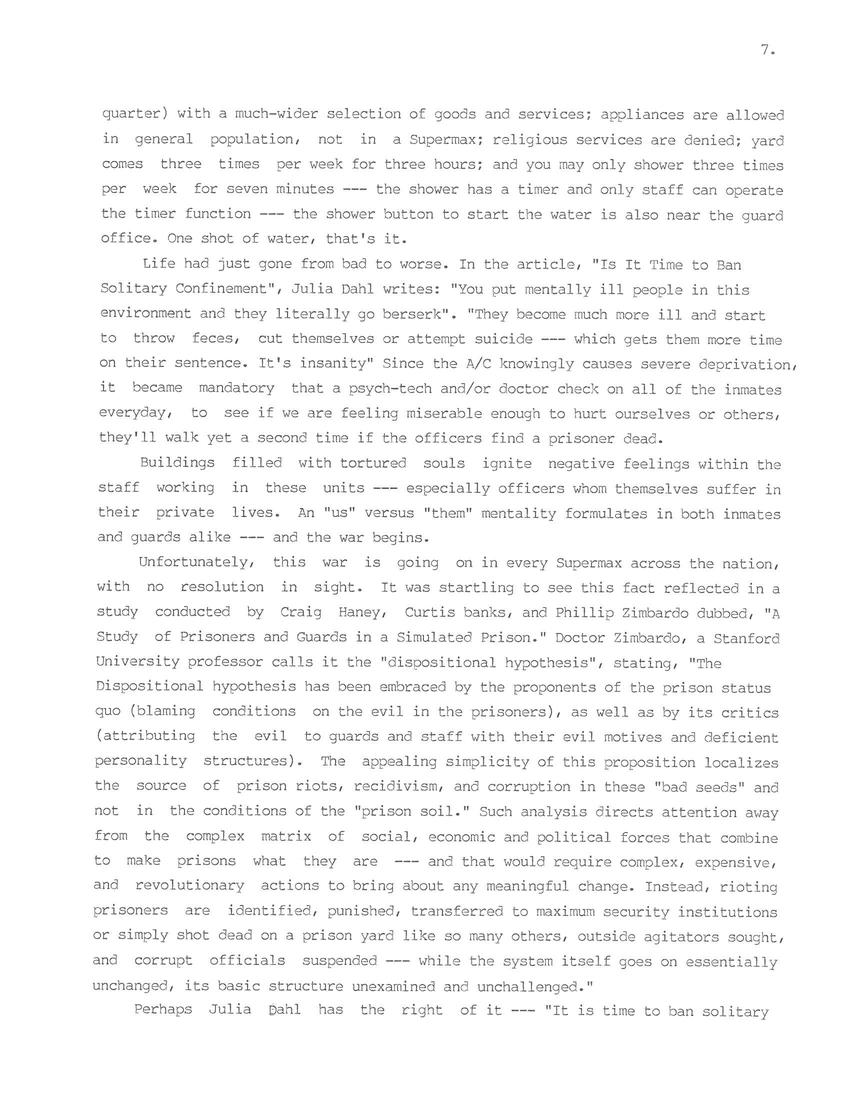
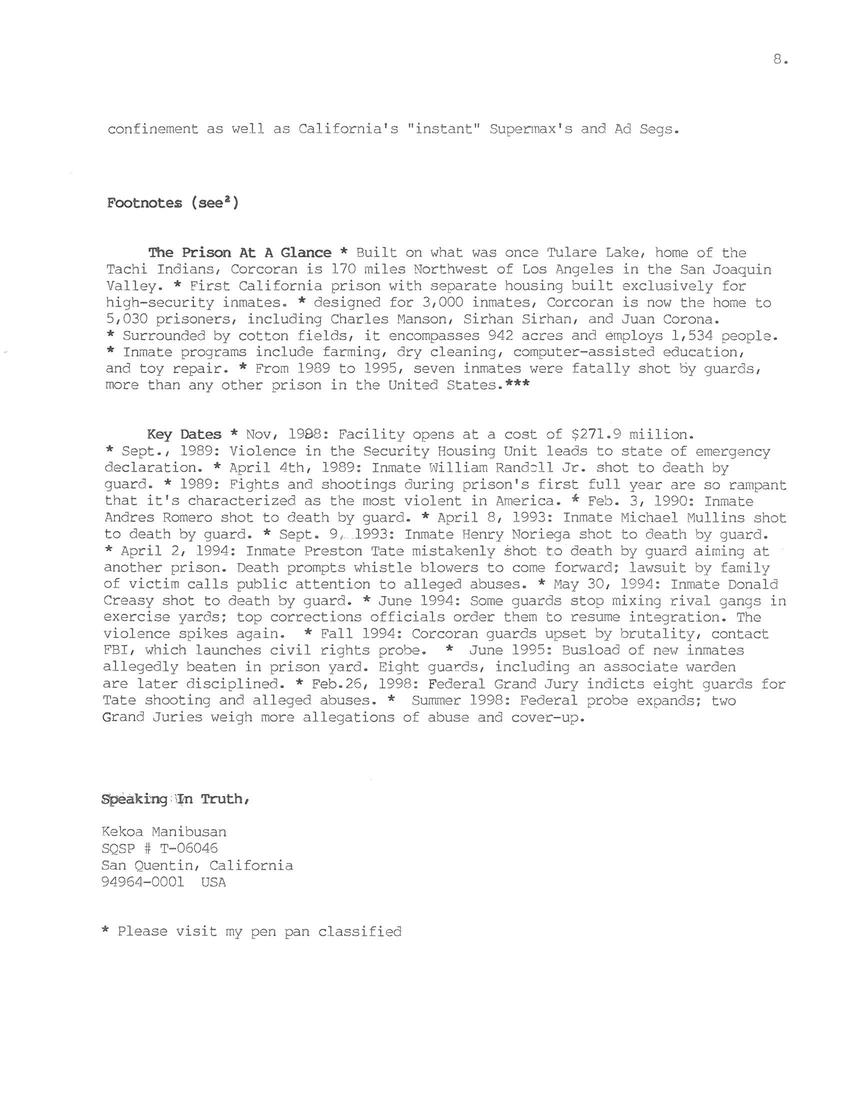

Replies (1)
Thanks for sharing your experiences. This is really hard to read. I can totally & absolutely not understand how people can survive in such an environment. But they actually do. The question is at what price.
I send you my best wishes!
Kat